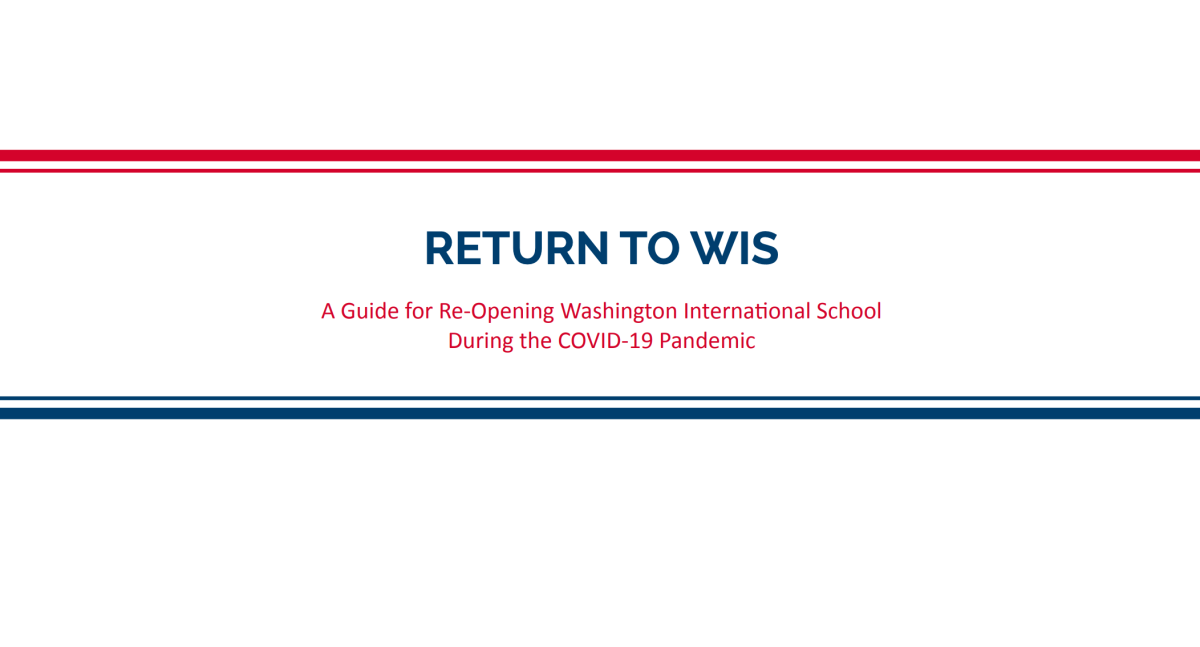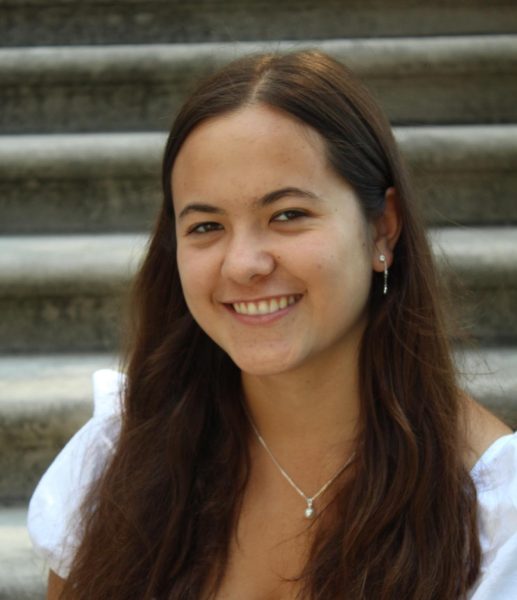Although WIS has clearly stated that students should not be mingling between cohorts outside of school, there is a controversy among students about whether this decision makes sense.
After months of distance learning, WIS transitioned into the hybrid model in early October. Many students are happy to see their classmates in person again, but feel restrained by the school’s expectations for them to not see their friends in the other cohort. Meanwhile, others agree very strongly that these guidelines are necessary in order to keep the community safe.
What are the school’s guidelines?
The Return to WIS handbook, which was sent to all WIS families early in the year, outlined the school’s guidelines regarding safety as WIS transitioned back into in-person learning. It was written by Head of School Suzanna Jemsby and a group of parents who are medical professionals.
“[While] recognizing the School cannot monitor or control what students and families do while off campus, community members are reminded to continue safe practices at all times. [Families] are advised to limit play dates and off-campus social activities. If such activities must occur, they should involve children in the same cohort and take place with proper physical distancing and mask wearing,” the handbook states.
Upper School Assistant Principal James Bourke said that since the school is not in a position to monitor students actions outside of school, this is not an official rule. It is, however, a community expectation that the school is strongly recommending in order to keep the community safe.
Why are these guidelines in place?
The cohort system was originally created to reduce the amount of students on campus and in individual classrooms. However, it has also helped limit the amount of exposure each person has. It limits contact within the community and prevents possible cross-contamination if someone in either cohort were to be infected with COVID-19.
“You’re only regularly exposed to people in [your] cohort, and so that is an additional piece of the puzzle, as far as how these are contributing to the health and safety of our community,” Bourke said.
Dr. Irini Sereti, who works at the NIH and is a WIS parent, believes that these guidelines are important. She notes that they facilitate contact tracing if there is a case at school.
“It’s much easier to say, ‘Okay, it’s just people from this cohort, and we don’t have to worry about the other cohort,’” she said.
However, Sereti did mention that these guidelines do not take into account other factors, such as straining personal relationships and outside exposures, like sports activities.
What do students think about this?
In a Dateline survey sent out to Upper School students, results showed that the students were pretty split in terms of what their opinions were on these guidelines. Out of the 48 responses, the majority said that they disagree with the expectation that they should not be allowed to interact with students in the other cohort whatsoever.
Freshman Martina Tognato Guaqueta feels that not being able to interact with the other cohort at all is “a little bit extreme.”
Tognato Guaqueta expressed that the school should have taken a different approach to this matter, as the current policy has the effect of threatening and restricting students.
“We are teenagers, and we still think like kids. [However,] we still understand the implications the spread would have at school. So I feel like we can be responsible, [the administration] just [has] to give us the opportunity to do so,” she said.
Senior Carmen Miller, on the other hand, believes that these guidelines are very reasonable and understandable.
“I think they’re geared towards keeping everyone [as] safe as possible and being able to have as many people as possible come to in person classes,” she said.
Miller believes that having these restrictions makes it easier to prevent the spread of the virus if there were to be an outbreak and helps maintain the cohort system.
“I think the idea behind putting ‘don’t socialize with people outside of your cohort’ policies in place was that if people are having intercohort interactions on the weekends or after school, that really undermines the validity of the cohort system as a method of infection control,” Miller said.
Can cohorts interact if students are taking proper precautions?
Most respondents believe that as long as proper precautions are taken, interaction between cohorts should be acceptable.
Miller said that taking proper precautions would definitely be more acceptable and prevent infection, but it “undermines the spirit of what WIS has asked us to do.”
There will not be exceptions from the administration for student interaction between cohorts, according to Bourke. Students will have to socialize online with friends. However, if the lack of interaction is taking a bad toll on a student’s mental health, the administration may allow them to switch cohorts, and then they could see their friends with proper precautions.
“We’re really not going to get into ‘this is a green light and that’s a red light’ and all that. We have one clear, simple [expectation]: families should avoid socializing between the cohorts,” he said.
What about teachers, who come in contact with both cohorts?
Upper School Principal Sarah Polland said that teachers do “cross pollinate,” however, the Department of Health has said that there is a low risk of transmission from teachers to students in the cohorts, since they take proper precautions.
“That changes if we were to allow mixing of the cohorts because then you have a greater volume of people mixing with each other. And again, the focus is to seek to minimize the number of individuals in the community that have had contact with each other on a regular basis,” she said.
Additionally, Polland believes that students must be aware of the fact that their actions affect the others in the community, not just themselves.
“There needs to be the understanding [about] people’s actions outside of school. They have a responsibility when they’re coming back on campus. Being around, you know, more elderly people in terms of the faculty,” she said.
What are the consequences for not following these guidelines?
Polland sent out an email on November 3 to Upper School students, reminding them of these guidelines and warning students that there may be consequences for actions the school deems unsafe.
“While we do not wish to police out-of-school events, we hope you remember that your actions outside of school may lead your peers to feel unsafe and impact their willingness to come to school. We are therefore prepared to take stricter measures if we can confirm that students are mixing across cohorts outside of school. The health and safety of our entire community depends on compliance with our Community Expectations,” Polland wrote.
Freshman Elektra Gea-Sereti said that she has never gotten a clear explanation as to what these exact guidelines are, and wishes that the administration had been clearer and more specific when giving out this information.
“With this rule, the answers I’ve gotten have always been really unclear, because the answer would be ‘WIS’s social contract does not allow for the cohorts to mix.’ And yet, the next thing that they would say is, ‘but you should do what you and your family deem safe,’” Gea-Sereti said.
Polland later said if she or the school learns of mingling that has been going on in any of the school divisions, students may not be allowed to come to in-person classes.
“I will certainly meet with those students, those parents, and possibly depending on what the situation is that student would not be allowed to continue on campus, learning for a certain period of time,” she said.
Miller understands that consequences are necessary to ensure that students actually follow these expectations.
“This isn’t about the school trying to police our personal lives just for the sake of it,” she said. “This is about trying to keep everyone in the community safe, so I think it is necessary to have some way of making sure that people aren’t violating that trust.”
Will students follow these guidelines?
The majority of students who responded to the survey said that they believe that their peers will not follow these guidelines provided by the school.
Tognato Guaqueta said she strongly believes that cohort interaction has been going on outside of school.
“We are students, what do they expect? We are teenagers in this day and age. We haven’t been able to see our friends regularly for months, and they’re now trying to split [our friend groups apart],” she said.
Tognato Guaqueta thinks that the guidelines are very vague, and therefore her peers have more trouble following them.
“If they were more exact, I think my peers would mostly stick to them. Obviously there’s going to be a couple people that don’t, and a couple instances [where] that doesn’t happen. But that’s just life,” she said.
Dr. Sereti said that students from different cohorts should avoid having contact, but suggested having specific exceptions. She believes interaction can be acceptable as long as people “are following very strict epidemiologic guidelines for prevention of infection.”
“I mean, at the end of the day of course it’s personal responsibility and we just have to follow the rules, and be very cognizant of the fact that we’re not only putting ourselves at risk, but others,” she said.
“We’re having a good experience [at WIS] and we’re hoping to keep things moving,” Bourke said. “And I just hope everybody continues to work together on this.”
By Naomi Breuer

































































